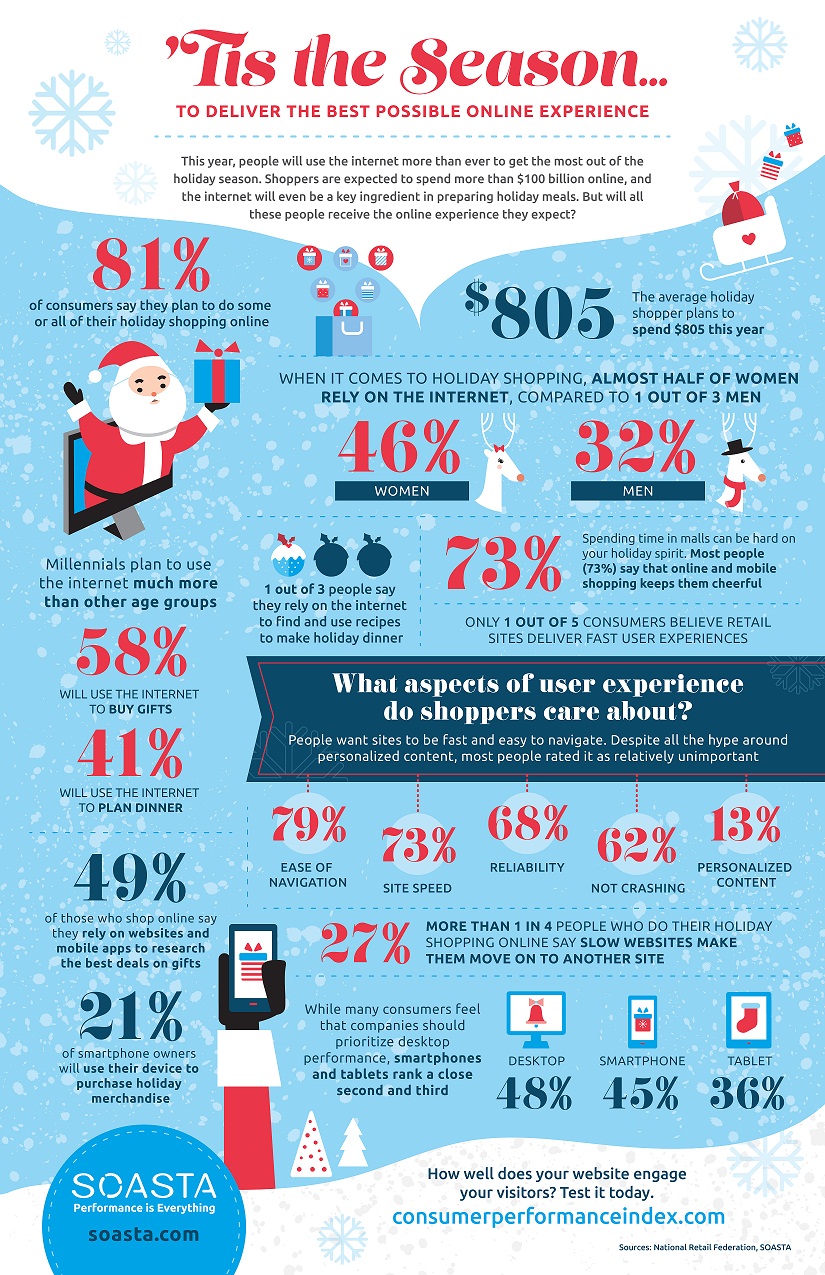
What attributes do consumers expect from shopping sites? It's a question of critical importance to Internet retailers. At this time of the year, retail and ecommerce businesses are bracing for 15% more holiday shoppers than last year. What can they do to ensure that they get a generous slice of the holiday pie?

With the holidays on the horizon, SOASTA has released the results of a survey gauging the extent to which consumers' online behavior would be affected if websites had performance grades.
According to SOASTA's survey, website performance will strongly influence how Americans do their online holiday shopping. In fact, 70 percent of Americans' browsing and online shopping habits would be influenced by website performance grades, including how and where they would do their online holiday shopping.
Millennials' Need for Speed
Millennials in particular push holiday ecommerce performance. Among survey respondents, a whopping 75 percent of Millennial men and 81 percent of Millennial women said their browsing behaviors would be affected if websites had performance grades (compared to the 70 percent of the general American population cited above). Fifty-three percent of Millennial women said they would skip online shopping sites with poor grades, and 56 percent said they would do more shopping on sites with good grades.
Women are Santa's #1 Helpers
When asked in which situations Americans most rely on websites, 46 percent of American women said "online holiday shopping" as did 32 percent of American men. However, no other demographic group shops online as often as Millennial women. While the average American finds a website most important for online holiday shopping, 58 percent of Millennial women report that online holiday shopping is the most important use of a website.
Are Most Internet Retailers Failing Shoppers?
When asked which websites are generally best performing, Americans are hard-pressed to name any that are top performing, suggesting that for most sites, there is room for improvement. Only 19 percent said that consumer product sites are generally the best performing, and only 17 percent praised big box store sites.
The Importance of Getting an A on Your Report Card
So, going back to my original question — what shopping site attributes do consumers value most? Our survey findings make it clear that only the top-performing sites will earn their business, by offering superior:
■ Ease of navigation
■ Speed
■ Reliability
The reality is that no one wants to shop online for the holidays at a retail site that received a failing, or even average, grade in website performance. These findings suggest that Internet retailers with lower scores could benefit significantly by improving the performance of their websites.
Holiday shoppers are pressed for time, in a hurry to complete dozens of tasks on their holiday to-do lists. They just don't have the time to wait around if a site is slow, for example. And if they move on, they won't make purchases and, perhaps more importantly, will likely not return.

Ann Ruckstuhl is CMO of SOASTA.
